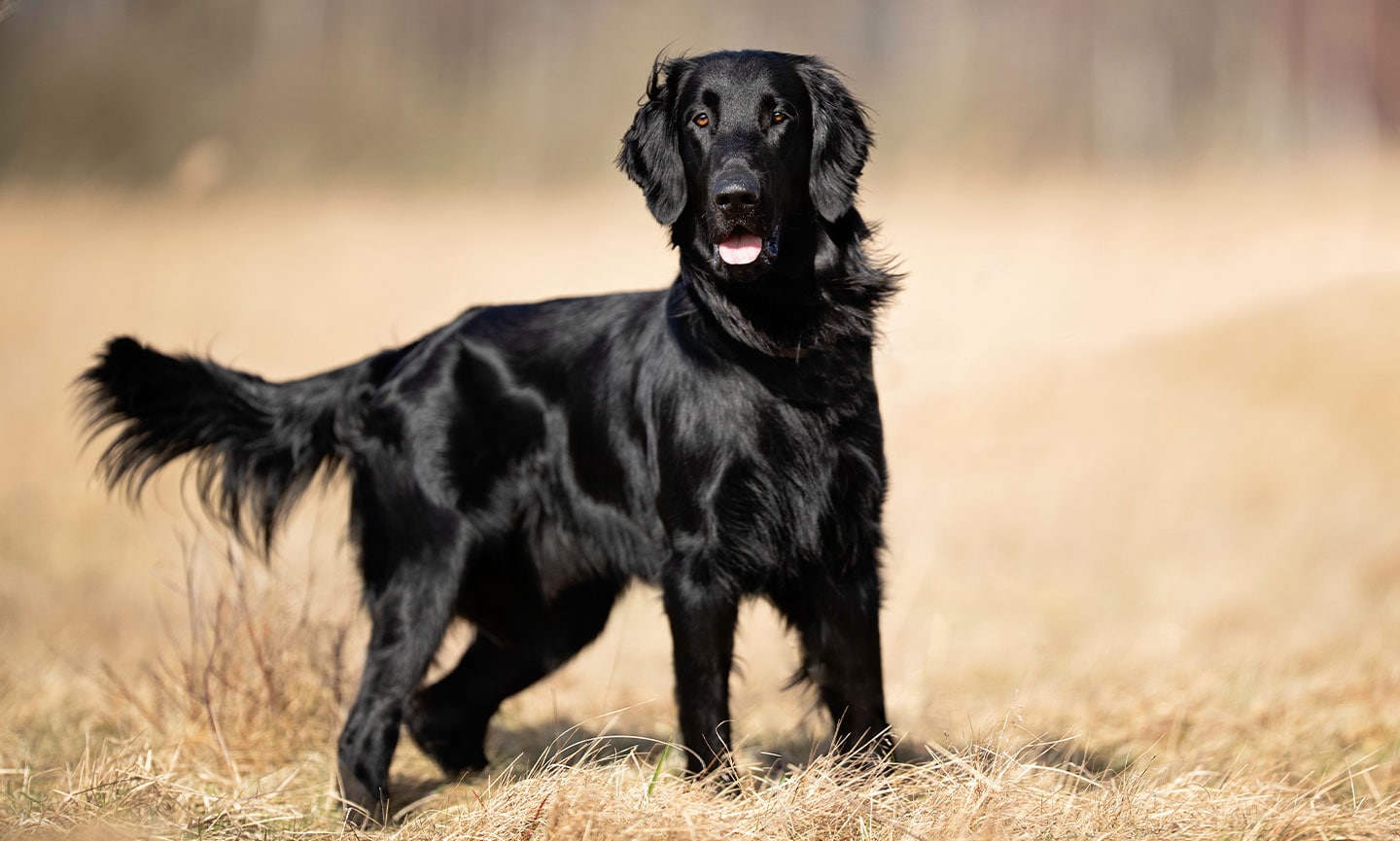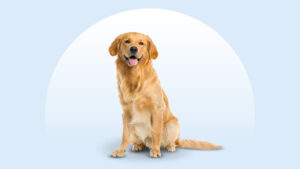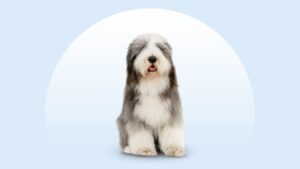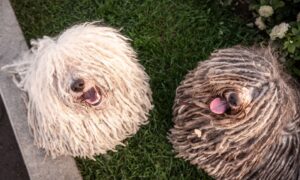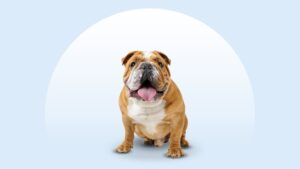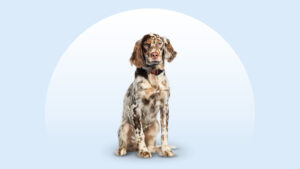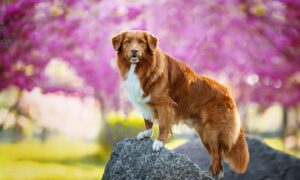Flat-Coated Retriever
Updated May 5, 2025
Flat-Coated Retriever
Updated May 5, 2025
Originally bred to retrieve ducks, Flat-Coated Retrievers are an outgoing and happy-go-lucky dog breed. They thrive with active pet parents who can provide lots of exercise and have plenty of room in their home (and hearts) to fit this larger breed (who are always puppies at heart!).
Happy-Go-Lucky, Mischievous, Outgoing
Male: 60-70 pounds
Female: 60-70 pounds
Male: 23-24.5 inches
Female: 22-23.5 inches
8 to 10 years
Black, Liver
Need a pick-me-up? Spend some time with a Flat-Coated Retriever. Super-happy, a bit rambunctious and a whole lot of tail-wagging enthusiasm: That’s this breed in a nutshell. These cheerful dogs are are full of energy and will be thrilled to go on new adventures with you each day, happily hiking, swimming, hunting or just playing in the backyard. These striking dogs tend to perpetually act a bit puppyish; but with a big grin to keep you laughing at their antics, they’ll cement their place in your heart.
Flat-Coated Retriever Characteristics
Flat-Coated Retriever Appearance
Flat-Coated Retrievers have sleek bodies that are highly athletic and powerful. Their intelligent, animated expressions let you know they’re always ready for new adventures and games. This breed’s lustrous, flat, straight coat helps protect them from water and weather while they’re out for a hunt or hike. The Flat-Coated Retriever’s wagging tail often gets a workout when this breed meets new people or plays a game of fetch with their favorite humans.
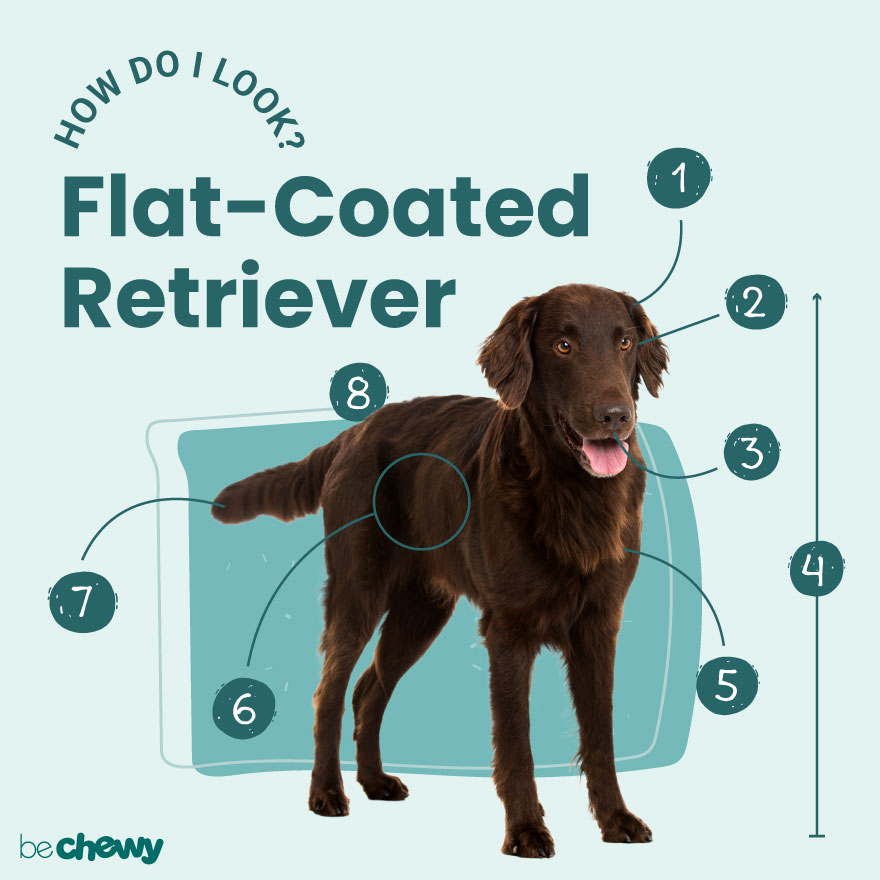
- Ears
Flat-Coated Retriever ears are somewhat small. They have thick hair, called feathering, and lie along the side of the dog's head.
- Eyes
Flat-Coated Retriever eyes are medium-sized, shaped like almonds and usually dark brown or hazel.
- Nose
This breed has a large nose with generously sized nostrils. Dogs who have a black coat will have a black muzzle, while dogs with a liver-colored coat will have a brown muzzle.
- Coat Length
The Flat-Coated Retriever has a medium-length coat. The hair is straight and lies flat against the dog's body.
- Coat Color
Flat-Coated Retriever colors include a solid black or a solid liver (dark brown) coat color.
- Tail
The Flat-Coated Retriever tail is relatively straight. When this breed is in motion, there isn't a curl in the tail.
Flat-Coated Retriever Temperament
If you were to take the head of your high school’s pep squad and magically transform them into a dog, paws down you’d get a Flat-Coated Retriever. Known for being friendly and outgoing, their happy-go-lucky temperament will rub off on you whether you’re going for a walk, playing a game of fetch or heading off on another adventure with your new best friend. Three cheers for that!
The Flat-Coated Retriever breed is very family-oriented, highly social and not known to be aggressive. But while the Flat-Coated Retriever doesn’t rank high on biting tendencies, these dogs can act like puppies even into adulthood, so some mouthing and playful biting might occur.
They are the epitome of the social butterfly and love meeting new people. (They’re always looking for new recruits to the Homecoming committee!) Their family comes first, though—they bond strongly to their people and get along well with kids, dogs and cats.
This high-energy breed is happiest outside where they can run and romp. Bred to be sporting dogs, the Flat-Coated Retriever will be happy to retrieve game for you, but the breed is also well-suited for sports like agility, tracking and scentwork.
How to Care for a Flat-Coated Retriever
Despite their rugged appearance, a Flat-Coated Retriever is a high-maintenance pooch. While their coats are relatively easy to maintain, they do shed a lot, and since they’re extremely active and mature more slowly than other dog breeds, you’ll be spending a lot of your time playing with and training your pup.
Grooming
Training
Diet
Exercise
Environment
Flat-Coated Retriever Health
Flat-Coated Retrievers have a life expectancy of 8-10 years. While this breed tends to be healthy, there are some health issues you should be aware of. Knowing about these issues can help you to avoid or quickly recognize them, keeping your dog healthy and happy.
- Hip Dysplasia: Hip dysplasia is a painful condition where the ball and socket of your dog’s hip joint rub together. This can get worse as your dog ages and can make it difficult for them to run and play. Hip dysplasia can be hereditary, so it’s a good idea to work with a breeder who has evaluated their breeding dogs for the condition. If your dog does develop hip dysplasia, there are many treatment options, including pain medications and surgery.
- Luxating Patellas: Luxating patella is a condition in which your dog’s kneecap slips in and out of place. This can be painful, and your dog may limp on and off as the kneecap shifts, then returns to its correct position. In severe cases, surgery may be recommended to correct this issue.
- Gastric Dilatation-Volvulus (GDV): Also called bloat, GDV is a condition that can occur where your dog’s stomach twists and gets filled with gas. This is a life-threatening emergency that typically requires surgery. GDV often affects dogs who have deep and narrow chests, so the Flat-Coated Retriever can be at risk. Your vet may recommend tacking your dog’s stomach to their body wall during their spay or neuter as a preventative measure (called prophylactic gastropexy). You can also help prevent bloat by feeding your dog more frequent meals throughout the day using a slow feeding bowl.
- Cataracts: Flat-Coated Retrievers can be prone to developing cataracts, which are a white or milky opacity that can limit your dog’s vision. If they progress, some cataracts can cause blindness. Cataracts can be hereditary, and they can typically be surgically removed.
- Glaucoma: Glaucoma can be a genetic condition affecting flat-coated retrievers resulting in increased ocular pressure that can cause pain and blindness. There is a genetic screening test so be sure to ask your breeder. Diagnosis is typically by checking intraocular pressure (IOP), and treatment is most commonly eye drops and medication.
Flat-Coated Retriever History
The Flat-Coated Retriever’s origins began in Britain in the 1800s. The breed was heavily influenced by the St. John’s Dog and Setter. The Flat-Coated Retriever’s coat was one of their most notable characteristics, and it was developed to help protect the dog from rain, brush and other elements they would face when out hunting.
Flat-Coated Retrievers were bred to be easily trainable and to be physically suited to the hunt field. They accompanied hunters while duck hunting, swimming out to fetch the ducks that had been shot.
These dogs were initially highly popular. They did well in dog shows and field trials. Initially, the black-coated dogs were valued more highly, but the liver-colored dogs became more popular in the 1900s. However, the Golden Retriever and Labrador Retriever were also recognized as separate breeds, and these breeds gradually surpassed the Flat-Coated Retriever in popularity. The American Kennel Club (AKC) officially recognized the Flat-Coated Retriever in 1915.
While Flat-Coated Retrievers had been highly popular with gamekeepers and hunters, World War II resulted in challenges like food shortages and limited transportation, causing the breed’s numbers to decline. After the World Wars, breeders turned their attention to preserving the breed and their history, which they did successfully. Since then, selective breeding has helped to restore this unique breed, and today, the Flat-Coated Retriever is popular as both a hunting and family dog.
You can find Flat-Coated Retriever puppies from reputable breeders on the AKC’s website. The average Flat-Coated Retriever puppy price varies from $2,000-$3,000. For that price, you’re usually getting a puppy who has been screened for potential health problems and temperament issues, and your puppy might have pedigree papers. You can also reach out to local shelters to see if there is a Flat-Coated Retriever to adopt.
FAQs
Do Flat-Coated Retrievers shed?
How long do Flat-Coated Retrievers live?
Are Flat-Coated Retrievers rare or extinct?
What are the most common Flat-Coated Retriever mixes?
Are Flat-Coated Retrievers good family dogs?
Expert input provided by veterinarian Dr. Travis McDermott, DVM, Hospital Director of Durango Animal Hospital; Dr. Sara Ochoa, DVM, a veterinarian at Animal Hospital of West Monroe in West Monroe, Louisiana and the co-founder of How To Pets; and Mary Thompson, CPDT-KA PMCT1, Owner of Happy Hound University, LLC.
Breed characteristic ratings provided by Dr. Sarah J. Wooten, DVM, CVJ, a veterinarian at Sheep Draw Veterinary Hospital in Greeley, Colorado; dog trainer and behavior consultant Irith Bloom, CPDT-KSA, CBCC-KA, CDBC, owner of The Sophisticated Dog, LLC, in Los Angeles; and certified animal behavior consultant Amy Shojai, CABC, in Sherman, Texas.
The health content was medically reviewed by Chewy vets.
